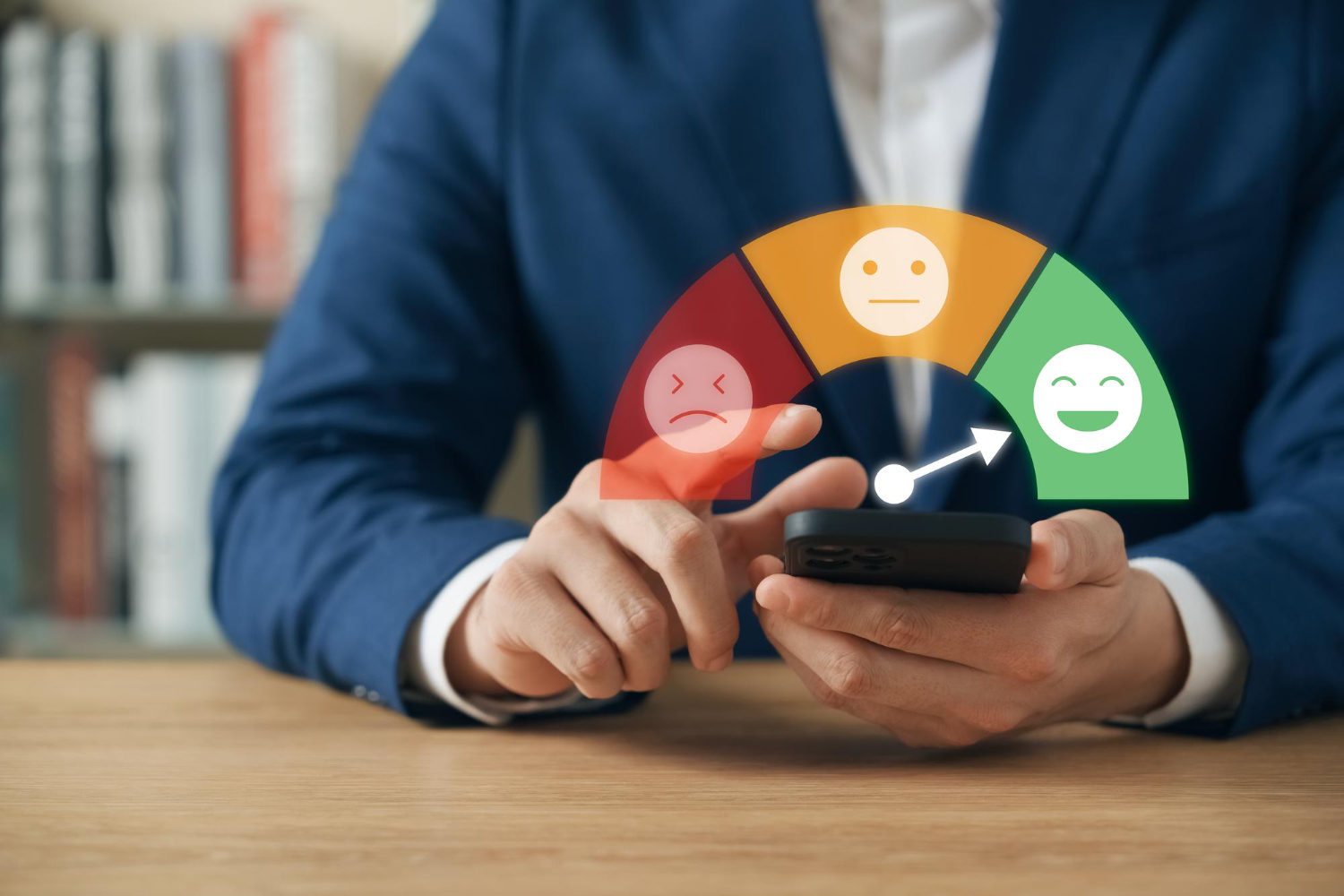Inbound Sales: Understanding Its Stakes and Benefits
Inbound selling is revolutionizing sales practices with a buyer-centric approach. This modern methodology transforms customer relationships by emphasizing personalized guidance throughout the entire buying journey. Sales professionals become true advisors, creating a tailored buying experience through a deep understanding of each prospect's needs. It's a strategy that adapts to businesses of all sizes and generates lasting results.
- Inbound sales puts prospects at the center of your approach, attracting customers through relevant content rather than cold outreach.
- Personalizing the customer journey, based on behavioral data analysis, is essential for engaging and converting prospects.
- CRM is a central tool for unifying information, synchronizing marketing/sales teams, and optimizing lead nurturing.
- This method generates higher-quality leads at a lower cost, reduces sales cycles, and improves conversion rates through a consultative approach.
The fundamentals of inbound sales
Defining inbound sales
Inbound sales represents a radical transformation in the art of selling. This approach places prospects at the heart of the sales process: rather than actively soliciting potential customers, salespeople naturally attract qualified leads through relevant content and a strategic digital presence.
A salesperson practicing inbound sales acts as an expert advisor who guides prospects through their decision-making process. For example, instead of directly pitching the benefits of CRM software, they first help buyers identify their specific customer relationship management needs.
This method relies on a synergy between marketing and sales, creating a smooth buying journey where every interaction delivers real value to the prospect.
Key principles of this B2B strategy
Success in a B2B strategy rests on four fundamental pillars. The precise identification of customer needs through behavioral data analysis allows you to anticipate their expectations.
Content marketing personalization forms the second essential pillar. Targeted whitepapers and case studies demonstrate your industry expertise while nurturing decision-makers' thinking.
The intelligent automation of qualification and nurturing processes ensures optimal lead follow-up. Finally, continuous performance measurement allows for the optimization of every stage in the sales cycle. A consolidated dashboard helps to quickly identify the highest-performing actions.
The central role of CRM in the inbound approach
A modern CRM radically transforms the inbound approach by centralizing prospect interactions. The platform analyzes visitors' digital behaviors to identify optimal moments for sales contact.
Teams benefit from a 360° view of the customer journey through consolidated data: pages viewed, content downloaded, emails opened — metrics that help monitor customer lifetime value (LTV) over time. This wealth of information enables the fine-tuning of messages according to prospect maturity.
Marketing-sales synchronization happens naturally through the CRM. Sales reps receive alerts when leads show strong interest, like repeatedly viewing a product page. The system automatically prioritizes the most engaged leads, maximizing the team's time on promising opportunities.
Outbound vs. inbound sales: What are the differences?
The traditional outbound sales approach
Outbound sales relies on a proactive approach where salespeople directly initiate contact with prospects. This method depends on concrete actions like cold calling, sending personalized emails, or participating in trade shows.
An outbound salesperson typically dedicates 80% of their time to actively searching for new customers. For example, in the B2B sector, an IT services company might contact up to 100 decision-makers per week to present their solutions.
The outbound strategy favors a structured approach with optimized sales scripts and proven prospecting techniques. Sales teams use specialized tools to identify their targets, like professional databases or social networks.
Competitive advantages of inbound
Inbound sales strategy generates a significantly higher ROI than traditional methods. Acquired leads cost up to 60% less than those from outbound, according to a 2024 study.
The approach enables deep customer journey personalization through collected behavioral data. Marketing automation and segmentation transform every interaction into a targeted conversion opportunity.
Companies adopting this method see an average 38% increase in revenue when marketing and sales teams work hand-in-hand. Creating quality content establishes lasting trust relationships, while lead scoring optimizes salespeople's time on the most promising opportunities.
Impact on lead quality
Inbound leads demonstrate superior buying maturity through their self-documented journey. A sales director with access to the interaction history can quickly identify a prospect's specific points of interest, thanks to behavioral data analysis and comparative benchmarks.
Reduced sales cycles naturally result from this preliminary qualification. Salespeople focus their efforts on prospects already sensitized to the proposed solutions, as illustrated by an industrial SME that reduced its average negotiation duration by 35%.
Behavioral scoring continuously refines the relevance of leads passed to sales teams. Engagement data (downloads, repeat visits, time spent) enables the establishment of precise profiles of buying intentions. An automated scoring system prioritizes prospects according to their real interest level to maximize conversion rates.
The inbound sales process step by step
Identifying qualified prospects
The first step involves analyzing engagement signals from your web visitors. Concrete actions like downloading whitepapers, repeatedly viewing product pages, or registering for webinars reveal strong interest.
A precise scoring system evaluates each interaction. For example, a prospect who views your pricing page three times in one week deserves special attention from your sales teams.
Digital journey analysis helps to understand buying maturity: pages viewed, time spent on site, social media interactions. This data categorizes prospects according to their qualification level and adapts your sales approach accordingly.
Connection and engagement
Once prospects are identified, personalizing the first contact becomes paramount. Initial messages must reflect a deep understanding of their industry sector and specific challenges.
Social selling proves particularly effective for establishing this first connection. A relevant LinkedIn comment or sharing an industry study naturally creates dialogue. Exchanges gradually build around business challenges rather than direct sales pitches.
Responsiveness plays a determining role: responding within 24 hours to a contact request triples your chances of converting prospects into customers. This consultative approach reinforces your credibility and lays the foundation for lasting professional relationships.
The needs exploration phase
Mastering exploration techniques transforms simple exchanges into genuine business diagnostics. An experienced salesperson knows how to ask strategic questions to reveal their contact's hidden challenges — applying methods like the 5 Whys to dig deeper into root causes.
The art lies in the ability to dig beyond initial requests. For example, a company expressing CRM needs may actually be seeking to solve deeper problems of team coordination or customer follow-up.
Discovery interviews are structured around targeted open questions: "What impacts does this situation have on your business?", "How do you currently measure customer satisfaction?" This approach establishes a precise mapping of friction points and the prospect's priority objectives.
Presenting personalized solutions
Successful presentations rely on precise adaptation to the needs identified during the exploration phase. A high-performing salesperson transforms every piece of collected information into relevant arguments, demonstrating a deep understanding of prospect expectations.
Building customized proposals relies on tangible elements and structured argumentation models like the CAB method to highlight features, advantages, and concrete benefits. For example, for a company seeking to optimize customer management, the salesperson highlights specific features that address their daily challenges.
Personalized demonstrations play a determining role in this phase. By using the prospect's real data, the salesperson concretely illustrates their solution's added value. This pragmatic approach reinforces the offer's credibility and accelerates decision-making.
Advanced conversion techniques
Optimizing inbound calls
Mastering inbound calls requires a structured reception strategy. A dynamic call script, adapted according to the prospect's digital journey, increases conversion rates by 25% on average.
Responsiveness is a key factor: answering within 30 seconds doubles transformation chances. High-performing teams implement intelligent routing systems that direct each call to the most qualified salesperson according to the topic.
A precise qualification framework helps to quickly categorize incoming requests. For example, a prospect calling after viewing the pricing page three times in one week will immediately be directed to a product expert. This methodology guarantees optimal treatment of every sales opportunity.
Lead nurturing through content marketing
Content marketing establishes itself as a strategic lever for guiding prospects toward a purchase. Creating content targeted according to buyer personas transforms every interaction into a meaningful engagement opportunity.
To maximize your strategy's impact, diversify your formats:
- In-depth whitepapers on industry challenges
- Interactive webinars led by your experts
- Thematic newsletters adapted to the buying cycle
Analyzing interactions with this content reveals a prospect's buying maturity. A visitor downloading several technical resources signals concrete needs, while a regular newsletter subscriber shows lasting interest in your expertise.
Performance tracking and analysis
A dynamic dashboard forms the cornerstone of effective sales results analysis. Teams measure daily key metrics like conversion rate by acquisition channel and average deal closing time.
Using advanced analytical tools identifies decisive moments in the buying journey. For example, a salesperson noticing high engagement rates on product demonstrations will adapt their strategy to maximize this touchpoint.
Setting up automated alerts for significant KPI variations ensures optimal responsiveness. This data-driven approach transforms every interaction into a source of continuous optimization, strengthening the overall efficiency of the sales process.
Team training and development in inbound sales
The modern sales representative profile
Today's salesperson stands out through a mastery of digital tools and the ability to leverage customer data. Beyond traditional sales skills, they analyze buying behaviors using modern analytical platforms.
Their strength lies in their adaptability to new communication channels. A high-performing salesperson masters professional social networks as well as video conferencing tools to create authentic connections remotely.
Industry expertise represents a major asset of the 2025 sales profile. For example, a salesperson specialized in cloud solutions understands their clients' technical challenges and speaks their language. This deep understanding allows them to anticipate needs and bring real added value to every exchange.
Key skills to master
Success in inbound sales relies on fundamental abilities like active listening and prospect behavioral analysis. A salesperson excels in the art of strategic questioning to identify unexpressed needs.
Emotional intelligence plays a central role: recognizing non-verbal signals during video conferences or deciphering the tone of written exchanges allows for communication adjustment. For example, a prospect hesitating about prices needs an approach focused on added value rather than technical features.
Analytical skills become indispensable in 2025. Knowing how to interpret customer engagement data, like time spent on a product page or the navigation path, guides sales actions toward optimal conversion.
Frequently asked questions
What is inbound sales?
It's a buyer-centric sales approach that aims to attract prospects with relevant content and guide them as an expert advisor.
What's the main difference between inbound and outbound sales?
Inbound attracts interested prospects (pull), while outbound actively approaches potential customers (push) through direct calls or emails.
Inbound Sales: Understanding Its Stakes and Benefits
CRM centralizes prospect data, enabling deep interaction personalization and better synchronization between marketing and sales.
Turn opportunities into wins
With Cuevr, close more and faster
Cuevr helps you organize your thoughts and maximize every detail to persuade prospects more effectively and accelerate closing.
Precise, impactful proposals aligned with your goals.
Smart Builder, AI scoring, detailed tracking, and actionable recommendations to guide every step from qualification to closing.
Accelerate your sales cycles, Reduce ghosting, Improve your close rate, Enhance the quality and impact of your proposals
.avif)


.avif)


